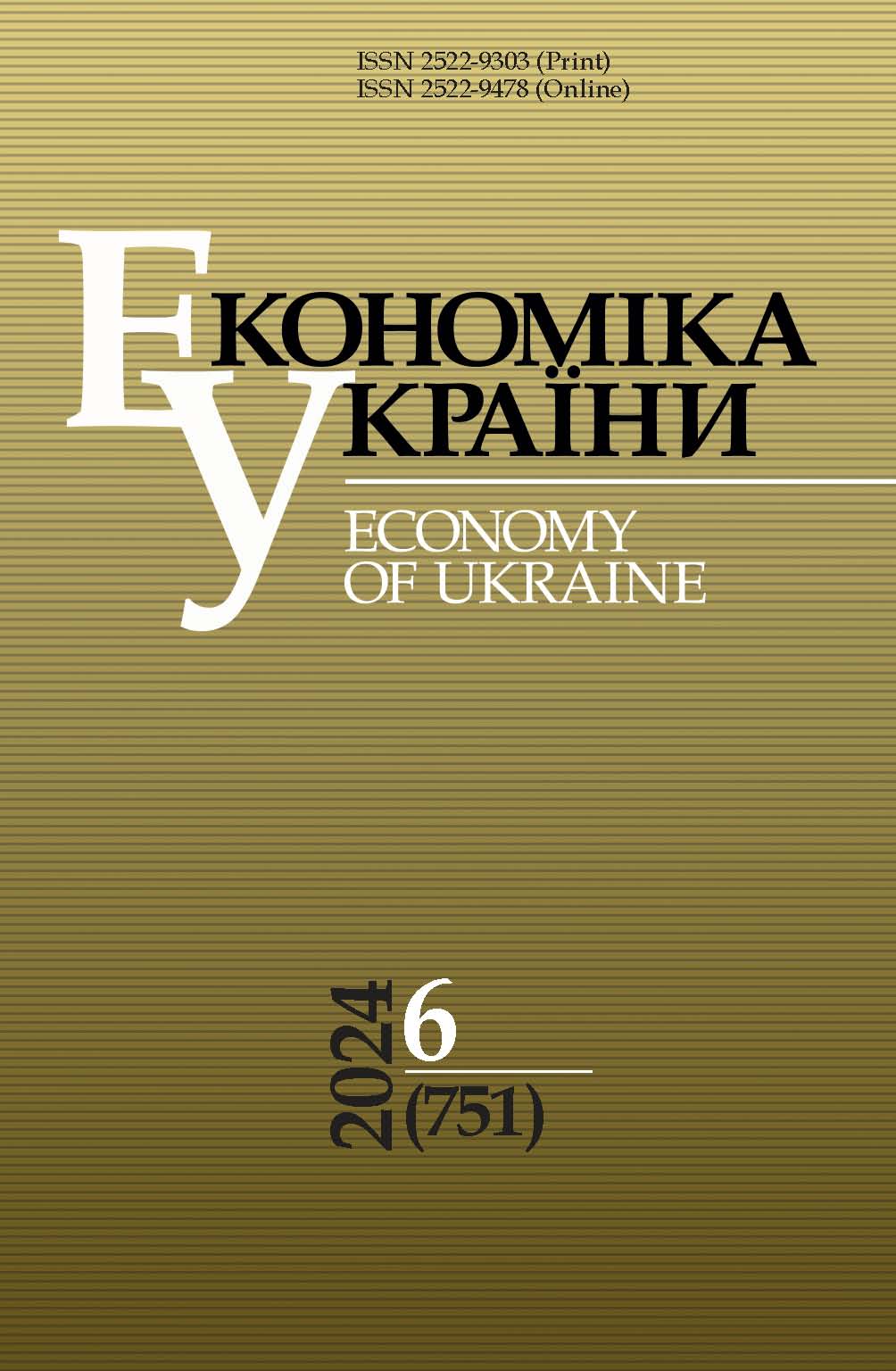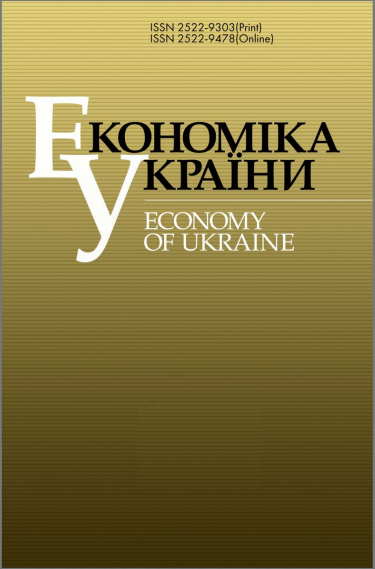INSTITUTIONAL MODELS OF CENTRAL BANK ACTIVITIES SUPERVISION
DOI:
https://doi.org/10.15407/economyukr.2024.06.003Keywords:
central bank; accountability; supervisory board; monetary policyAbstract
Accountability of the central bank and its monetary policy to the public is one of the key principles of its activity, along with the central bank's mandate (objectives and functions), its independence and decision-making system. Based on the analysis of theoretical sources and international experience, it is established that the accountability of the central bank can be exercised at three levels: internal control, accountability to supervisory bodies, accountability to the parliament or the president. It is determined that the topics of scientific research on the accountability of central banks are focused around issues of the development of institutional forms of accountability; harmonization of accountability, transparency and independence of central banks; improvement of corporate governance in central banks, and development of normative and legal framework for the functioning of supervisory boards. The main focus is on the role of supervisory boards in ensuring proper accountability of the central bank. Typical forms of supervisory boards’ interaction with the executive management of the central bank are summarized, those include: the single board model, dual board model, the specialized committee model, and the supra-central governance model. The key disadvantages and advantages of these typical forms are identified. The fundamental legislative principles of supervisory boards functioning are formulated, those include the specification of their supervisory responsibilities, creation of an exhaustive list of functions under their control, and the clear procedures for executive management’s reporting to them. It is substantiated that an important component of effective supervisory boards is their ability to conduct an impartial assessment of the central bank’s executive management, for which it is advisable to enhance their functionality with independent analytical units.
Problematic issues of the national central bank accountability system are identified, with the formulation of proposals for its improvement, which consist in a clear division of powers between the supervisory board and the executive management (in particular, regarding drawing up strategic documents), regulation of the process of reporting by the bank’s executive management on the exercise of their powers (in particular, regarding compliance with monetary policy principles), creation of an independent analytical unit under the supervisory board.
References
Woodford, M. (2003). Interest and prices: Foundations of a theory of monetary policy. Princeton, N.J.; Woodstock, Oxfordshire, Princeton University Press, 808 p. URL: https://press.princeton.edu/books/hardcover/9780691010496/interest-and-prices
Bartels, A. (1985). Volcker’s Revolution at the Fed. Challenge. Vol. 28. Iss. 4. P. 35-42. https://doi.org/10.1080/05775132.1985.11471028
Rogoff, K. (1985). The Optimal Degree of Commitment to an Intermediate Monetary Target. Quarterly Journal of Economics. Vol. C. Iss. 4. November. P. 1169-1190. https://doi.org/10.2307/1885679
Cukierman, A. (1994). Central Bank Independence and Monetary Control. The Economic Journal. Vol. 104. Iss. 427. P. 1437-1448. https://doi.org/10.2307/2235462
Crowe, С., Meade, Е. (2008). Central bank independence and transparency: Evolution and effectiveness. European Journal of Political Economy. Vol. 24. Iss. 4. P. 763-777. https://doi.org/10.1016/j.ejpoleco.2008.06.004
Blanchard, O., Dell’ariccia, G., Mauro, P. (2010). Rethinking Macroeconomic Policy. Journal of Money, Credit and Banking. Vol. 42, P. 199-215. https://doi.org/10.1111/j.1538-4616.2010.00334.x
Dikau, S., Volz, U. (2021). Central bank mandates, sustainability objectives and the promotion of green finance. Ecological Economics. Vol. 184. Iss. 107022. https://doi.org/10.1016/j.ecolecon.2021.107022
Nakov, A., Thomas, C. (2023). Climate-Conscious Monetary Policy. ECB Working Paper. No. 2023/2845. http://dx.doi.org/10.2139/ssrn.4587400
Buchanan, A., Keohane, R. (2006). The Legitimacy of Global Governance Institutions. Ethics and International Affairs. Vol. 20(4). P. 405-437. https://doi.org/10.1111/j.1747-7093.2006.00043.x
Haan, J., Amtenbrink, F., Eijffinger, S. (1999). Accountability of central banks: aspects and quantification. Banca Nazionale del Lavoro Quarterly Review. Vol. 52(209). P. 169-193. URL: https://ideas.repec.org/a/psl/bnlqrr/199923.html
Oritani, Y. (2010). Public governance of central banks: an approach from new institutional economics. BIS Working Papers. No. 299. http://dx.doi.org/10.2139/ssrn.1599418
Lastra, R., Wyplosz, C., Claeys, G. et al. Accountability Mechanisms of Major Central Banks and Possible Avenues to Improve the ECB's Accountability. European Parliament, September 2020. 112 p. URL: https://www.europarl.europa.eu/cmsdata/211587/Topic%201%20Compilation.pdf
Сastellani, F. (2002). A Model of Central Bank's Accountability. IHEID Working Papers. Vol. 04-2002. URL: https://ideas.repec.org/p/gii/giihei/heiwp04-2002.html
Eijffinger, S., Hoeberichts, M. (2002). Central Bank Accountability and Transparency: Theory and Some Evidence. International Finance. Vol. 5. Iss. 1. P. 73-96. https://doi.org/10.1111/1468-2362.00088
Crowe, С., Meade, Е. (2008). Central bank independence and transparency: Evolution and effectiveness. European Journal of Political Economy. Vol. 24. Iss. 4, P. 763-777. https://doi.org/10.1016/j.ejpoleco.2008.06.004
Heldt, E., Müller, T. (2022). Bringing Independence and Accountability Together: Mission Impossible for the European Central Bank? Journal of European Integration. Vol. 44(6). Р. 837-853. https://doi.org/10.1080/07036337.2021.2005590
Sparve, R. (2002). Supervisory Boards in Some Central Banks. International Monetary Fund. URL: https://www.imf.org/external/np/leg/sem/2002/cdmfl/eng/sparve.pdf
Bossu, W., Rossi, A. (2019). The Role of Board Oversight in Central Bank Governance: Key Legal Design Issues. IMF Working Papers. Iss. 293. https://doi.org/10.5089/9781513524054.001
Khan, A. (2017). Central Bank Legal Frameworks in the Aftermath of the Global Financial Crisis. IMF Working Paper. Vol. 17(101). https://doi.org/10.5089/9781475595802.001
Eijffinger, S., Hoeberichts, M., Schaling, E. (1998). A Theory of Central Bank Accountability. CentER Discussion Paper. Vol. 1998-103. URL: https://ssrn.com/abstract=165653
Lastra, R., Dietz, S. (2022). Communication in monetary policy. European Parliament, February 2022. 43 p. URL: https://www.europarl.europa.eu/RegData/etudes/STUD/2022/703339/IPOL_STU(2022)703339_EN.pdf
Binder, C., Sekkel, R. (2023). Central Bank Forecasting: A Survey. Bank of Canada. Staff Working Paper. No. 2023-18. https://doi.org/10.34989/swp-2023-18
Downloads
Published
How to Cite
Issue
Section
License
Copyright (c) 2024 Publisher PH "Academperiodyka" of the NAS of Ukraine

This work is licensed under a Creative Commons Attribution-NonCommercial-NoDerivatives 4.0 International License.



